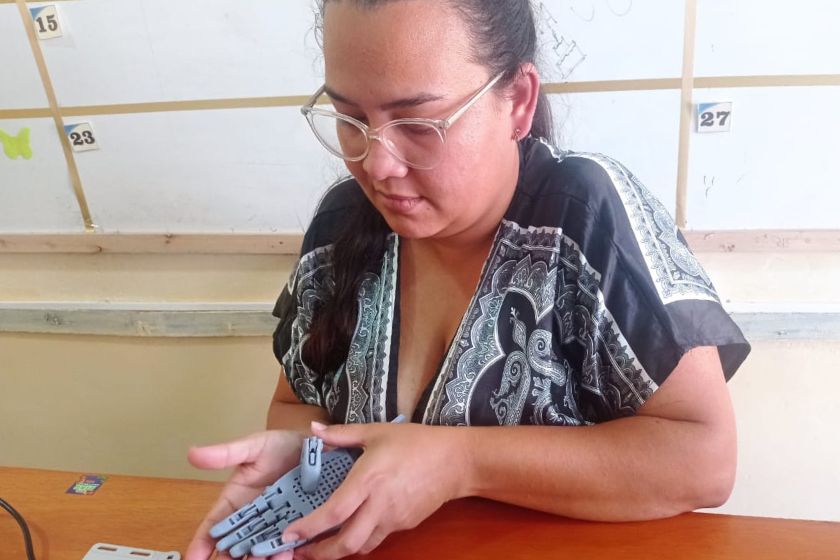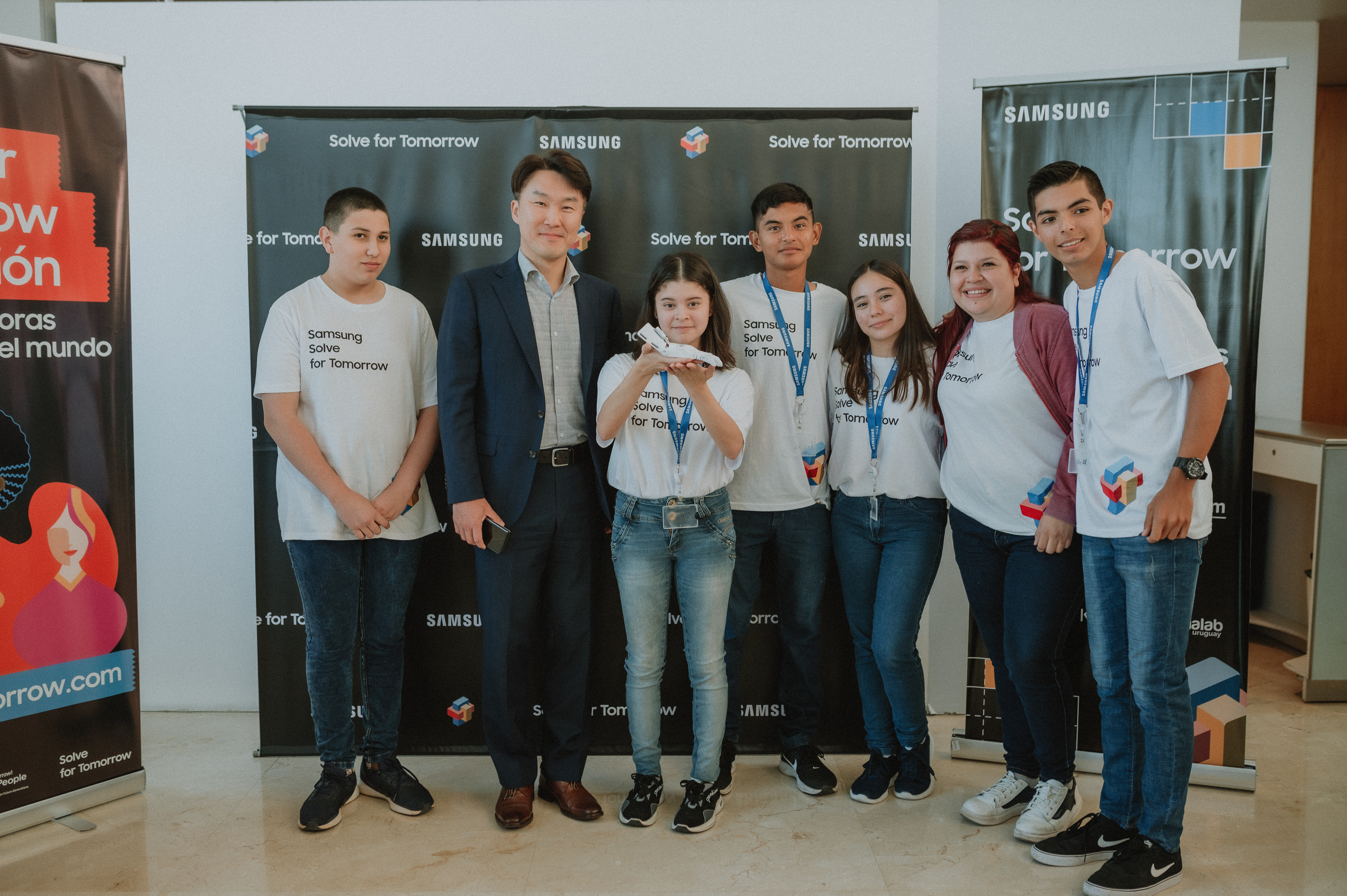When the students from the technology club named M.A.R. Tech were thinking about what problems they should focus on when developing a social impact project in 2023, they realized that the answer was next door. A student has a neighbor who went through an arm amputation and, by talking to him, she learned more about the difficulties that people face with this reality. So, she thought that the group could help by creating a prosthesis that, although it could not solve every type of case, would help in some of them. This is how the NeoLimb Prosthetic Hand was born, one of the finalists in the 10th edition of Solve for Tomorrow SEASA (Argentina, Paraguay, and Uruguay).
“We were investigating the types of prostheses that could be applied, what alternatives exist for what types of amputation,” says Leticia Cuevas, the mediator teacher of the initiative. In the group, there are five involved, aged 15 and 16, from the computer science, basic sciences, and humanities specialties of Miguel Ángel Rodríguez National College of Diversified Secondary Education, in the city of Ñemby. They are scientific and technical high school students, which in Paraguay is called bachillerato and is an intermediate stage between basic schooling and higher education.
The M.A.R. (an acronym for the name of the school, Miguel Ángel Rodrígues) Tech Club is an initiative of the school created in 2022 to promote projects in this area which brings together students from scientific and technical education courses. When they decided to create a solution to make mechanical hand prostheses more affordable, the first step was to investigate the current scenario, and one of the main obstacles was the cost. In Paraguay, this product can be purchased through charitable organizations, which cover part of the expenses, but it is still expensive: the approximate value is 680 dollars.
Freely available model
The most economically viable way of acquiring prostheses is to manufacture them using 3D printing. Even though the school doesn’t have such a printer, the teacher says that there are plenty of them on the market, and thanks to donations from students and guardians, the school paid around US$67 to make a hand prosthesis, which is ten times cheaper than through organizations.
Furthermore, the project stands out because it aims to use the open-source model; That is, Neolimb will soon make available software with source code that anyone can inspect, modify, and improve. “Suddenly there are similar projects, but what we wanted to do was to create a website where you can download the plans and print them on your own,” Cuevas highlights.
According to her, this was something thought out from the beginning, to make the project as democratic as possible. Anyone can download the model and make it at a 3D printing house, without requiring specialized technical skills.

A model designed for the majority of patients
To create the prosthesis, the students focused on transcarpal amputation, which is partial, like the removal of fingers, and is the most generic form of amputation, according to data collected during the initial stage of the project. The group studied the anatomical structure of the hand, emphasizing the metacarpals, which are located between the small carpal bones and the phalanges.
The students researched more about the anthropometry of the hand and basic coordinated movements and began with the basic engineering of the prototype, establishing the concept of their prosthesis. But putting that knowledge into practice was a challenge. Many tests were necessary for the prosthesis to be comfortable and aesthetic.
What we learned was that sometimes the answers to challenges in a project are materials from our daily lives; very simple objects, said the teacher.
With all the pieces well adjusted, the group printed the prosthesis and tested it with stress simulation software and also, after post-processing, which is the process of applying filters and screen effects to drastically improve the images of a product. When they were satisfied with the result, they donated the final product to a worker who had a hand amputation due to a work accident at a company near the school. Then they evaluated with the user how successful the project was, and he stated that he felt particularly good about the range of tasks he could perform thanks to Neolimb.
A leap of confidence for young people
Although the main goal was to improve the lives of people with hand amputees, the students also gained a lot from the experience. “The mentoring that the students did opened their way of thinking more concerning scientific research,” says the teacher. For her, the young people learned to identify the problematics of a problem, set measurable objectives, and follow the prototype phases, until reaching a final state.

Furthermore, the teacher highlights that this initiative allowed them to discover their strengths, highlighting their capabilities within teamwork. “There are students who are excellent at presentation and helped us create connections with others. One of them manifests herself as a born leader and some are very advanced in the technical part. The project was an opportunity to put all these talents into practice. “, emphasizes Cuevas.
The result is that the students are involved in the project to the point of wanting to work on Neolimb even on vacation. “One of the students, for example, during the end-of-year break already started working on automating the prosthesis. She is now looking at how to use Arduino parts to do that,” she reveals. This will now be the group’s focus in 2024, as it will be uploading and leaving the website active with the free download of the prosthesis model.




